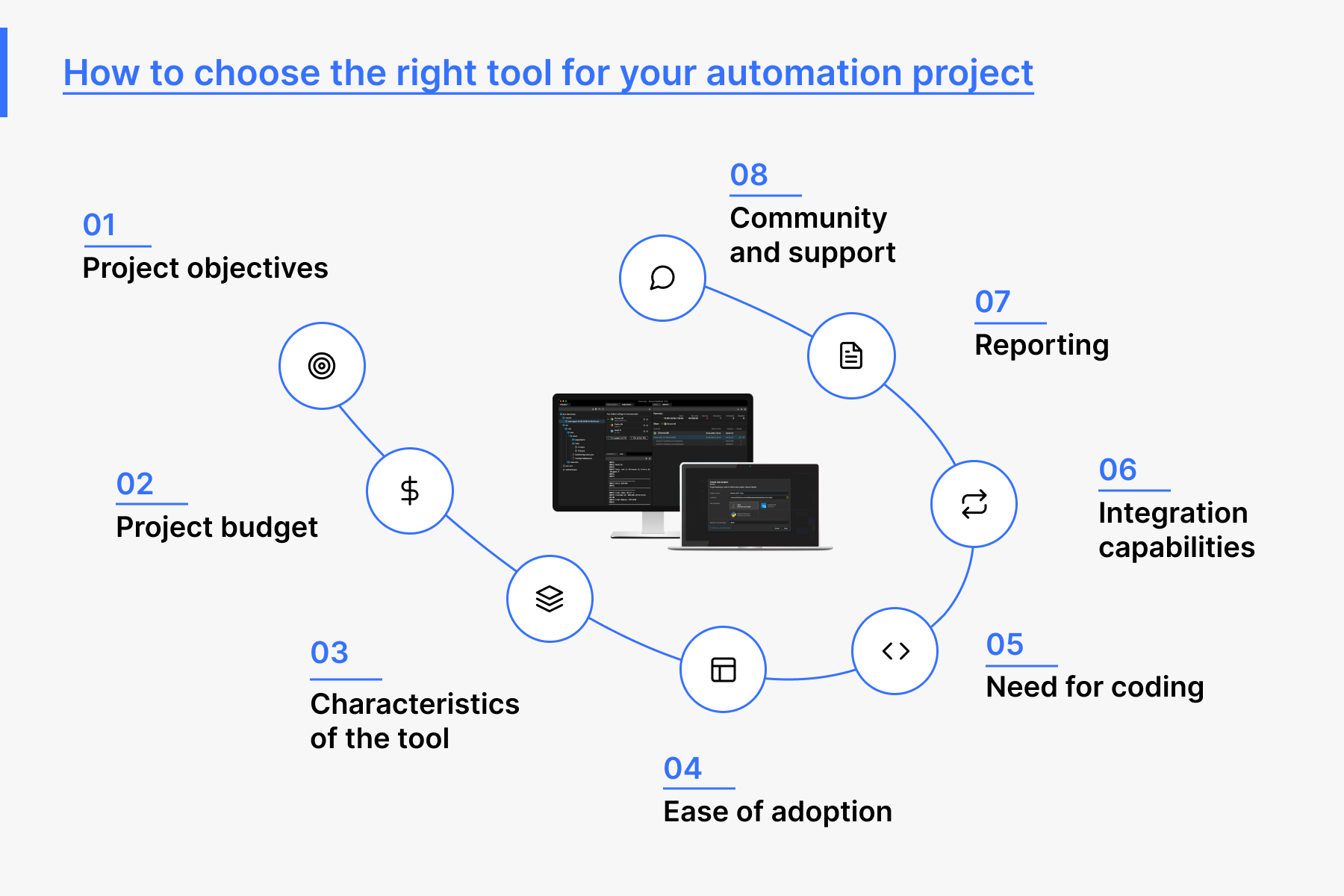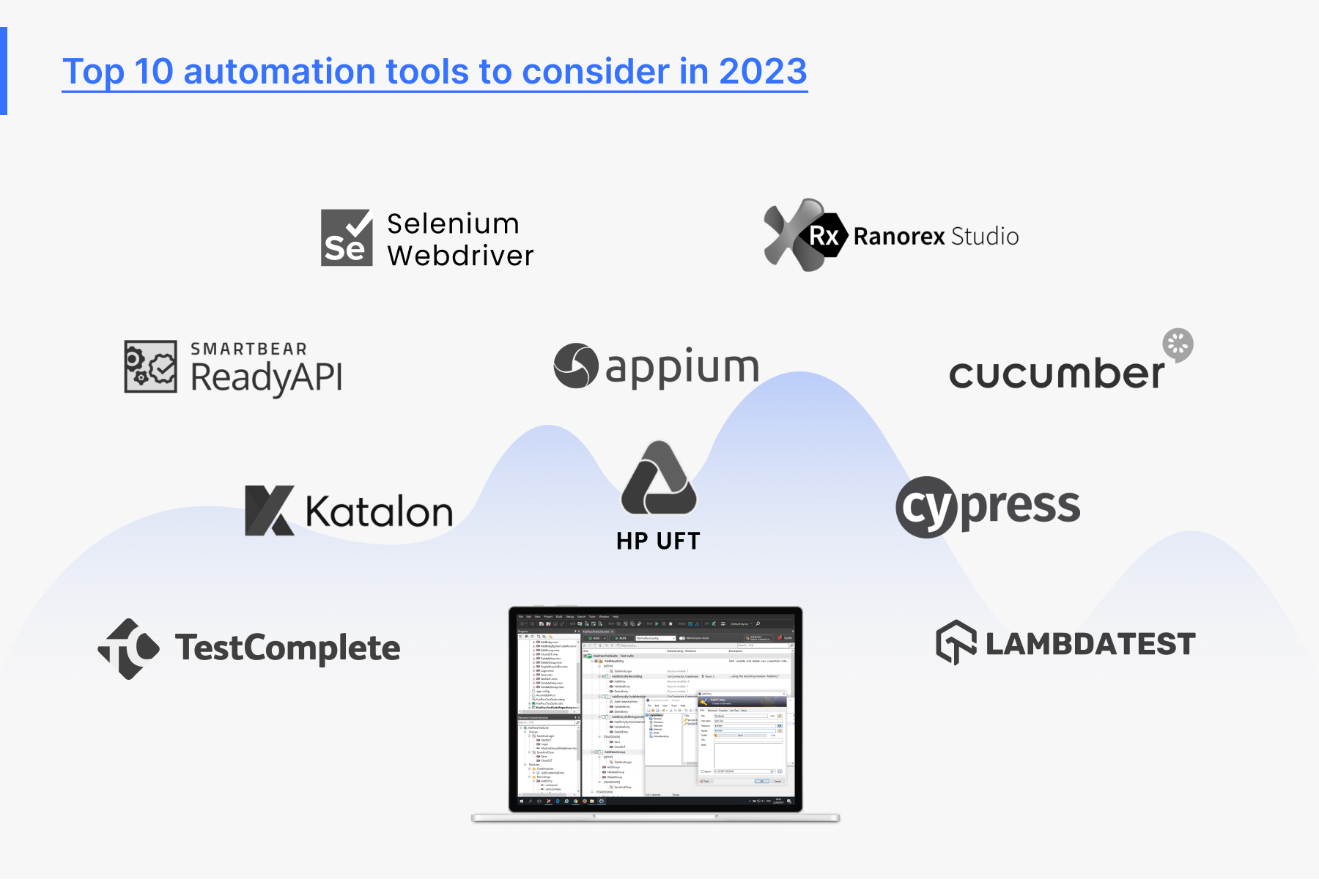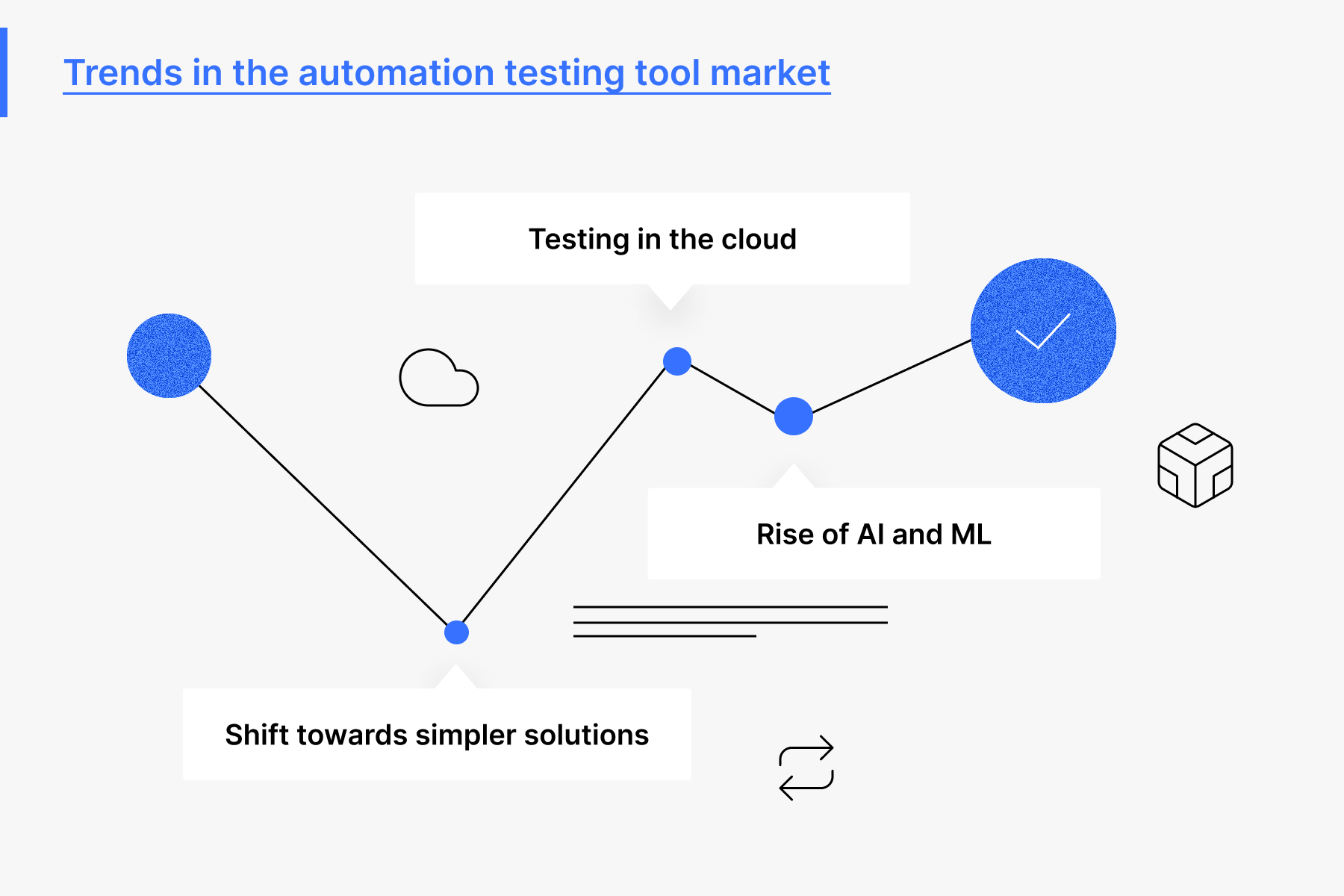Top 10 Testing Automation Tools In 2025: How To Choose The Right One

In 2022, the automation testing market passed the $20 billion mark, and in the next decade, it is projected to reach a compound annual growth rate of 15%. Most companies dealing with software in any capacity will consider automating their quality assurance processes sooner or later.
At the same time, 26% of companies find it challenging to choose the right automation tools for the job. Let’s take a look at some of the most popular automation testing tools for 2023 and how to pick the right one for your next project.
What is an automation testing tool and why do we need one?
An automation testing tool is a solution designed to check the functional and non-functional requirements of a software product with the help of automated test scripts. Automation testing tools exist for two purposes: to increase the efficiency of testing (that also includes speeding up the QA process and enhancing test coverage) and to make the job easier for the QA engineers.
It’s sometimes possible to launch test automation without the use of tools and only with the help of coding from scratch, but most organizations prefer to involve automation tools at least in some capacity to achieve the desired results.
How to choose the right tool for your automation project?

There is now an automation testing tool for every project size, purpose, programming language, budget, and technical level. This is why some companies struggling with making the right choice is hardly surprising. To take a systematic approach to the selection process, you and your team need to consider a few factors:
-
Project objectives. Specifically, you need to know for a fact what exactly you want to automate and which results you want to achieve in the end. For example, automating performance testing will require a different tool or set of tools than introducing automated UI tests to the mix.
-
Project budget. There are plenty of open-source automation tools, but some of the most popular ones are paid solutions. These can be tools with a lifetime license or available on a monthly subscription basis. This is why it’s important to make sure that your company is up for a long-term commitment if you go for paid tools.
-
Characteristics of the tool. What exactly the tool can do is probably the most vital consideration factor. Among other things, you need to know what languages the solution supports, in which environments it can operate, whether it supports mobile platforms, and which types of testing it can help you perform.
-
Ease of adoption. Introducing a new tool, let alone starting a new automation project with brand new tools, requires full buy-in from your team members. And one of the ways to ensure it is to help the team adopt the new technology faster. This is why you may want to go for a solution with a flatter learning curve.
-
Need for coding. Many software professionals believe that you don’t need to know how to code to be good at testing automation, but this skill can be absolutely essential for some projects. However, if you decide to use tools that require knowledge of coding, make sure that your team has a skill set to match.
-
Integration capabilities. It’s very rare for QA teams to use just one automation tool. The ability to seamlessly integrate with other automation tools and frameworks, bug-tracking software, project management tools, CI/CD infrastructure, and other environments is crucial for a handy automation solution.
-
Reporting. After all, the reason why we are doing automation testing is because we want to get as clear of a picture about the state of the software as possible. Detailed and timely reports can help you not miss a single issue with the product, no matter how small or rare it may be. So, robust reporting functionality is a must.
-
Community and support. A dynamic community of users around a product can enhance your experience of adopting and using an automation tool through shared tips and insights. It’s also worth making sure that the product is still actively supported by its developers, so that you can get help when needed.
Top 10 automation tools to consider in 2023
 If you’re on the search for the right automation tool for your next testing project, here are the top 10 tools that are particularly popular among software companies and individual testers.
If you’re on the search for the right automation tool for your next testing project, here are the top 10 tools that are particularly popular among software companies and individual testers.
1. Selenium WebDriver
Selenium WebDriver is a versatile tool for automating testing of web applications and websites by using various browser-based environments.
2. Appium
Appium is one of the most widely used tools for automated testing of native & hybrid mobile applications and mobile web apps on iOS, Android, and Windows.
3. Ranorex Studio
Ranorex Studio is a comprehensive solution for UI and functional testing. It supports features like test design and offers wide integration opportunities to QA teams.
4. Katalon
Katalon is a test management tool that uses AI to improve the testing process and can prove beneficial for a variety of automation purposes. It’s a low-code tool with easy adoption.
5. ReadyAPI
ReadyAPI is one of the most popular solutions for automating API testing. It supports REST, SOAP, and GraphQL APIs, and is well-suited for QAs with different levels of expertise.
6. TestComplete
TestComplete is a comprehensive tool for automating UI testing. It enhances QA with an AI-powered object recognition feature and both scripted and scriptless testing projects.
7. Cucumber
Cucumber is mostly known as a Behavior Driven Testing tool that is also widely used for testing automation. It’s known for its wide support for most modern development languages.
8. HP UFT
Unified Functional Testing by HP is a tool for automating cross-platform testing. It’s compatible with mobile, desktop, and web environments, and supports most development technologies.
9. LambdaTest
LambdaTest is a cloud-based solution for automated testing across 3,000+ combinations of hardware configurations, operating systems, and browsers.
10. Cypress
Cypress is a tool for comprehensive web application testing that is based on JavaScript. Cypress is suitable for beginners because it puts the visual aspects of testing forward.
Trends in the automation testing tool market

The automation testing industry is developing rapidly, and here are the three main trends we will witness in the upcoming months:
-
Testing in the cloud. As software companies need to ensure compatibility of their products with more and more platforms and environments, many of them are using cloud infrastructure instead of physical devices.
-
Rise of AI and ML. The meteoric growth of AI and ML technologies of the past year naturally couldn’t also increase its presence in the automation testing industry, which is why we are witnessing them become more common there.
-
Shift towards simpler solutions. The automation testing tool market is moving towards simpler operations and easy adoption through low-code and no-code solutions, as well as relying more on the record and playback feature.
Bottom line
When choosing an automation tool for your testing project, you cannot just go with the most popular one and hope for the best, as there are so many other factors to be considered, from your team’s skill set to the project budget. However, knowing where the market stands can give you some valuable insight on the right direction and avoid some costly and time-consuming mistakes.